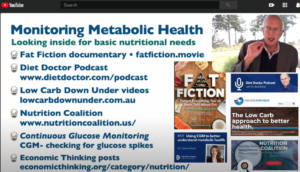From Poor Nutrition to Permanent Pandemics
Only 12 percent of American adults are metabolically healthy, study finds (ScienceDaily, November 28, 2018)
When hundreds of millions across the U.S. and Europe suffer from chronic conditions caused by poor metabolic health, upper respiratory infections each fall and winter send hundreds of thousands to hospitals with CLI (COVID-like illness) and ILI (influenza-like illness).
Worldometers on December 9 reports 19,666,160 currently infected patients with 99.5% in Mild Condition and 0.5% Serious or Critical. Nearly 50 million Closed Cases, with 97% Recovered/Discharged and 3% Deaths.
Poor metabolic health
For public health officials the challenge is to identify and protect the 0.5% who will suffer serious or critical reactions. Ideally public health officials would focus on improving conditions like low vitamin D levels and insulin resistance that put people of all ages at much higher risk for severe or critical infection and inflammation. See:
• Low Vitamin D Levels Tied to Odds for Severe COVID (WebMD, September 25, 2020),
• New Study Found 80% of COVID-19 Patients Were Vitamin D Deficient (Healthline, October 27, 2020),
• Analysis of vitamin D level among asymptomatic and critically ill COVID-19 patients and its correlation with inflammatory markers (Nature, November 19, 2020).
• People with vitamin D deficiency at higher risk of severe COVID-19, says study (News-Medical, December 4, 2020)
However… as John Tierney notes in Pandemic Penitents (City Journal, December 7, 2020):
“…the Centers for Disease Control can’t bring itself even to suggest that people take the pills on their own….Going out for a walk or taking a vitamin D pill is just too easy. It entails no pain and provides no glory or power to public-health officials and politicians, so they rarely give this advice despite the evidence that vitamin D helps the immune system against viral infections. It’s not surprising that groups with disproportionately high rates of Covid mortality are also prone to vitamin D deficiency: African-Americans and other minorities, the obese, residents of nursing homes and other elderly people. Levels of vitamin D tend to decline with age, and because the vitamin is synthesized in the body by exposure to sunlight, people tend to have lower levels if they spend less time outdoors or have darker skin that absorbs less ultraviolet radiation from the sun.”
Don’t Eat That Donut!
Higher blood sugar tied to COVID-19 death risk; rise in U.S. overdose deaths may have pandemic link (Reuters, December 5, 2020). If you are metabolically healthy, go ahead and have a donut. But if not, don’t. And if you don’t know, wear a CGM (Continuous Glucose Monitor) for 10 days so you can find out. Your CGM will tell your phone app what happens to your glucose and insulin levels after a donut or other high-sugar or high-carb snack or meal.
High blood sugar may portend a rocky course for COVID-19 patients who seek hospital care, even if they do not have diabetes, according to a new study of 11,000 COVID-19 patients in Spain. None were critically ill when they got to the hospital. But researchers found those who arrived with above-normal blood sugar levels had higher odds of dying there – regardless of whether they were diabetic. (Source above)
Millions not yet diagnosed with diabetes have pre-diabetes, and millions more suffer from insulin resistance for up to ten years before even pre-diabetes is diagnosed. Why are so many struggling? Critics of public health nutrition policies blame the federal push for low-fat foods launched in the 1980s (based on faulty epidemiological studies). Earlier Economic Thinking posts on nutrition and public health discuss this history.
Nina Teicholz book THE BIG FAT SURPRISE: Why Butter, Meat & Cheese Belong in a Healthy Diet reports the complex story of pubic relations, political accidents, buried research, and corrupt studies that led to misdirected federal nutrition policies.
For the NCFCA topic on E.U. immigration and a World Schools topic on donations after basic  needs, I recorded a nutrition/public health presentation. It’s always a good time to research nutrition and public health! Whether for better health or better debating, sorting out bogus from reliable nutrition and public health students is a worthy skill.
needs, I recorded a nutrition/public health presentation. It’s always a good time to research nutrition and public health! Whether for better health or better debating, sorting out bogus from reliable nutrition and public health students is a worthy skill.
Talk title is: Nutrition, Basic Needs, Migration, take two. (And a similar “take one” version: Nutrition, Pandemic, Basic Needs, Immigration).
Public health authorities could focus on the poor metabolic health of most in the developed world, and reform past policies and programs that contribute to poor nutrition. And everyday people could take responsibility for their own metabolic health, research, and learn what foods improve their health and strengthen their immune systems. Reducing sugar and high-carbohydrate foods would be a good thing for most. Without nutritional reform, the future will be one of more suffering from worsening chronic conditions, inflammation, pandemics, and endless multi-tiered lockdowns.
